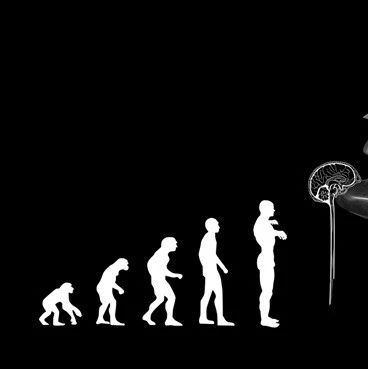导读:研究人员在人和动物模型中发现,前列腺素D2及其衍生物 15-dPGJ 2能抑制头发生长,在抑制过程中需要GPR44受体参与,该受体是一个针对脱发和稀发的潜在治疗靶点。

人类毛囊微观图:前列腺素D2(绿色)
(图片来源: Garza and Cotsarelis/Penn Medicine)
宾夕法尼亚大学的研究人员发现前列腺素D2(PGD2)蛋白质以异常形式存在于秃发男性的头皮中,该发现有望开发出新疗法以治疗常见的男性脱发症状。研究人员在人和动物模型中发现,前列腺素D2及其衍生物 15-dPGJ 2能抑制头发生长,在抑制过程中需要GPR44受体参与,该受体是一个针对脱发和稀发的潜在治疗靶点。这项研究发表在《科学转化医学》Science Translational Medicine 期刊上。
秃发对男性而言是很常见的,它是由于毛囊退缩以及微毛发生成而引起的。与正常毛囊相比,秃发毛囊生长的持续时间较短。
在追踪秃发潜在病因时,研究人员观察了秃发区和非秃发区的男性头皮组织,然后在小鼠模型中证实这一发现。他们发现,雄激素性脱发症男性头皮上秃发区的2 PGD水平比多毛区的高出3倍。PGD-2被添加到培养的毛囊时,头发明显变短,而其衍生物——15 dPGJ 2——完全抑制毛发生长。
George Cotsarelis 医学博士是皮肤科的教授和主任,他说:“尽管一些前列腺素被认为促进头发生长,而我们的研究结果却意想不到:前列腺素能够抑制头发的生长,这一结论是基于之前对毛囊干细胞的研究,即便还不能说明它与脱发有关。”去年宾夕法尼亚大学的一项研究发表在《临床研究》Clinical Investigation期刊上,研究人员发现毛囊干细胞不是完整无损的,这表明头皮中缺乏生长激活剂,或者毛囊生长受到抑制。
前列腺素在机体中行使多种功能(如控制细胞生长以及收缩和扩张平滑肌组织),多种前列腺素(F2alpha)被认为促进头发生长,研究人员却发现PGD2抑制头发生长,其它的前列腺素行使相反的功能,如提高和调控头发的生长速度。
对雄激素性脱发症患者进行观察时,研究人员发现前列腺素可表明一个男性和女性共有的信号途径。以后的研究,针对GPR44靶点的疗法,将决定该疗法能否也有益于雄激素性脱发症女性患者。

 Prostaglandin D2 Inhibits Hair Growth and Is Elevated in Bald Scalp of Men with Androgenetic Alopecia
Prostaglandin D2 Inhibits Hair Growth and Is Elevated in Bald Scalp of Men with Androgenetic Alopecia
Luis A. Garza, Yaping Liu, Zaixin Yang, Brinda Alagesan, John A. Lawson, Scott M. Norberg, Susan M. Fischer, Garret A. FitzGerald and George Cotsarelis
Testosterone is necessary for the development of male pattern baldness, known as androgenetic alopecia (AGA); yet, the mechanisms for decreased hair growth in this disorder are unclear. We show that prostaglandin D synthase (PTGDS) is elevated at the mRNA and protein levels in bald scalp compared to haired scalp of men with AGA. The product of PTGDS enzyme activity, prostaglandin D (PGD), is similarly elevated in bald scalp. During normal follicle cycling in mice, Ptgds and PGD levels increase immediately preceding the regression phase, suggesting an inhibitory effect on hair growth. We show that PGD inhibits hair growth in explanted human hair follicles and when applied topically to mice. Hair growth inhibition requires the PGD receptor G protein (heterotrimeric guanine nucleotide)–coupled receptor (GPR), but not the PGD receptor (PTGDR). Furthermore, we find that a transgenic mouse, K-Ptgs, which targets prostaglandin-endoperoxide synthase expression to the skin, demonstrates elevated levels of PGD in the skin and develops alopecia, follicular miniaturization, and sebaceous gland hyperplasia, which are all hallmarks of human AGA. These results define PGD as an inhibitor of hair growth in AGA and suggest the PGD-GPR pathway as a potential target for treatment.







